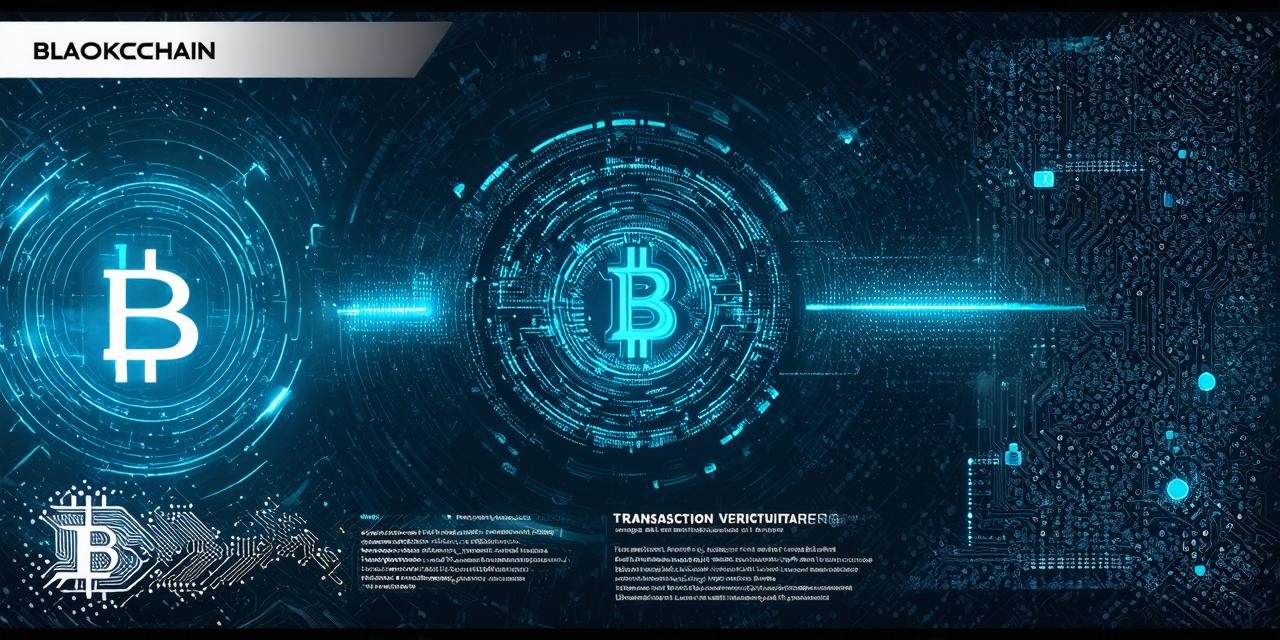Blockchain technology has gained widespread attention and adoption in recent years due to its potential to revolutionize various industries. One of the key features of blockchain is its ability to facilitate secure and transparent transactions without the need for intermediaries. However, the validation process of transactions on a blockchain network can be complex and may require specialized knowledge and skills. In this article, we will explore how transactions are validated in blockchain and provide insights into best practices for developers working with these networks.
Introduction to Blockchain Transactions
A transaction on a blockchain network is a digital exchange of value between two or more parties. This can include the transfer of cryptocurrencies, the execution of smart contracts, or the validation of data and assets. Transactions are recorded on a public ledger, known as a blockchain, which allows participants to trace the flow of assets and maintain a tamper-proof record of all transactions.
To ensure the integrity and security of the network, it is essential that transactions are validated before they are added to the blockchain. Validation involves verifying that a transaction meets certain criteria and conforms to the rules of the blockchain protocol. This process helps to prevent fraudulent activities, such as double-spending or tampering with the ledger, and ensures that all participants can trust the network and its transactions.
The Validation Process in Blockchain
In a blockchain network, transactions are validated by nodes, which are computers that store a copy of the blockchain and participate in the validation process. When a new transaction is proposed, it is broadcast to all participating nodes, which verify its authenticity and integrity.
Signature Verification
The first step in validating a transaction is to verify the digital signature of the sender. A digital signature is a mathematical algorithm that uses the sender’s private key to create a unique code that can be used to authenticate the transaction. This ensures that only the sender has the authority to send the transaction and prevents impersonation attacks.
Data Verification
Once the digital signature is verified, the next step is to verify the data contained in the transaction. This involves checking that the transaction details are accurate and conform to the rules of the blockchain protocol. For example, if the transaction involves the transfer of cryptocurrencies, the network may need to verify that the sender has sufficient funds and that the recipient’s account balance is not exceeded.
Confirmation
Once the transaction data is verified, it is added to a queue of pending transactions, known as a mempool. Mempools are typically managed by nodes in the network, which prioritize transactions based on various factors such as transaction fee and priority level. When a node selects a transaction from the mempool for validation, it creates a new block containing the transaction data and adds it to the blockchain.
Proof of Work
The final step in validating a transaction is to prove that a certain amount of computational work has been performed. This process is known as proof of work (PoW) and involves solving complex mathematical problems using powerful computers. PoW is used to prevent brute-force attacks and ensure that only authorized nodes can add new blocks to the blockchain.
Real-Life Examples of Transaction Validation in Blockchain
To illustrate how transactions are validated in blockchain, let’s consider some real-life examples:

-
Bitcoin transactions: In the bitcoin network, transactions are validated using a consensus mechanism called proof of work (PoW). Nodes in the network compete to solve complex mathematical problems and validate transactions by adding new blocks to the blockchain. Once a transaction is validated, it is considered confirmed and can no longer be reversed or modified.
-
Ethereum smart contracts: Smart contracts are self-executing digital agreements that can be programmed to automate various tasks such as asset transfers and payment processing. In the ethereum network, smart contracts are validated using a consensus mechanism called proof of stake (PoS). Nodes in the network validate transactions by creating new blocks and adding them to the blockchain based on their stake in the network.
-
Hyperledger Fabric: Hyperledger Fabric is a permissioned blockchain platform that can be used for various applications such as supply chain management and identity verification. In the Hyperledger Fabric network, transactions are validated using a consensus mechanism called modular consensus algorithms (MCAs). Nodes in the network validate transactions by verifying that they conform to the rules of the network and adding them to the blockchain.
Best Practices for Developers Working with Blockchain Transactions
When working with blockchain transactions, it is essential to follow best practices to ensure the security and integrity of the network. Here are some tips for developers:
-
Use secure coding practices: To prevent vulnerabilities and attacks, it is crucial to use secure coding practices when developing smart contracts and other blockchain applications.
-
Conduct thorough testing: Before deploying a blockchain application, it is important to conduct thorough testing to ensure that transactions are validated correctly and that the network is secure and robust. This includes testing for edge cases, performance issues, and security vulnerabilities.
-
Monitor the network: Once a blockchain application is deployed, it is essential to monitor the network continuously to detect and prevent any security breaches or attacks. This includes monitoring transaction activity, node behavior, and network performance metrics.
-
Stay up-to-date with network updates: Blockchain networks are constantly evolving, and it is important for developers to stay up-to-date with network updates and changes to ensure that their applications continue to function correctly. This includes staying informed about new consensus mechanisms, protocol updates, and security patches.
Summary
Transaction validation is a crucial process in blockchain networks that ensures the integrity and security of the network. By understanding how transactions are validated in blockchain and following best practices for developers, organizations can build robust and secure blockchain applications that can revolutionize various industries. As blockchain technology continues to evolve, it is essential for developers to stay informed about new developments and emerging trends to stay ahead of the curve.
FAQs
Here are some frequently asked questions about blockchain transactions:
-
What is a blockchain transaction?
-
How are transactions validated in blockchain?
A blockchain transaction is a digital exchange of value between two or more parties that is recorded on a public ledger known as a blockchain.
Transactions in blockchain are validated by nodes that verify the authenticity and integrity of the transaction data and add it to the blockchain if it conforms to the rules of the network.
